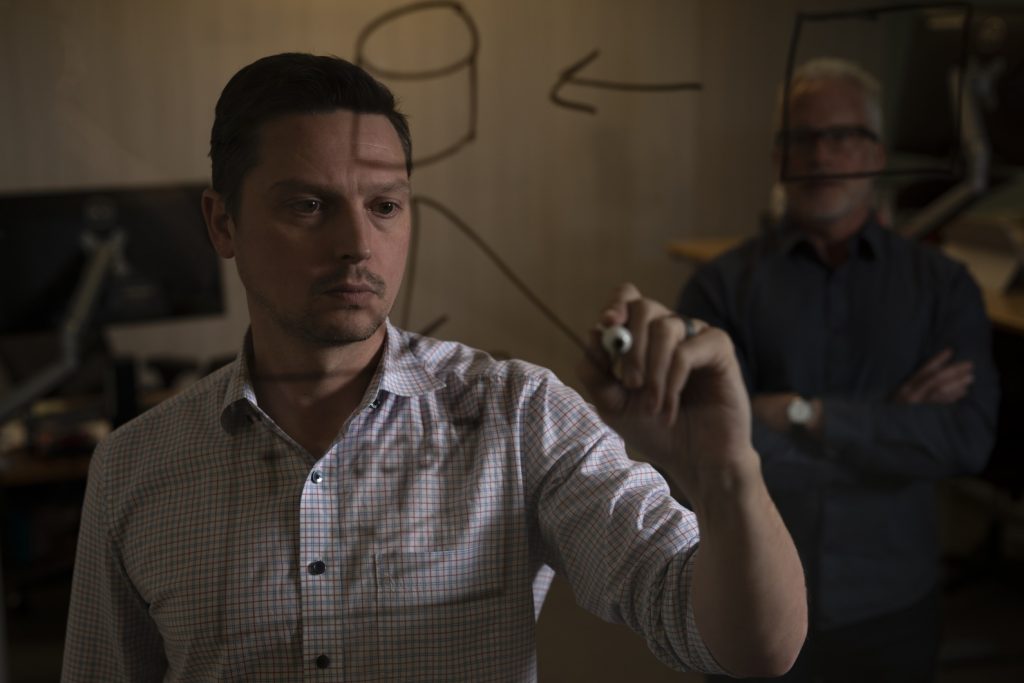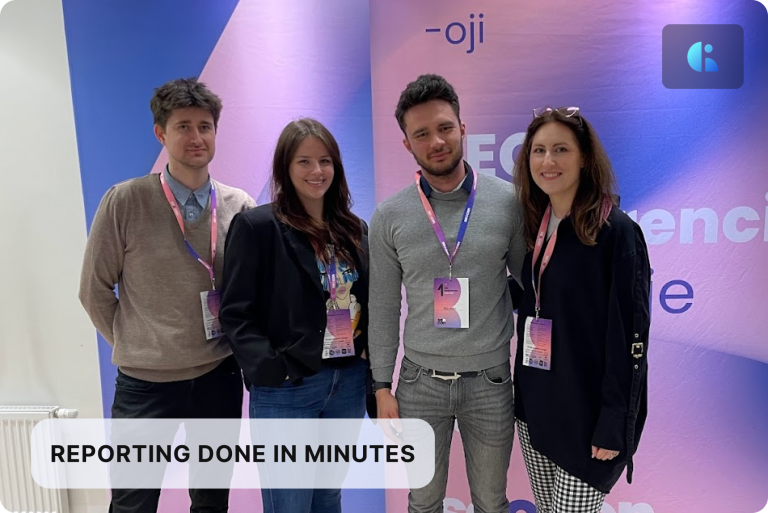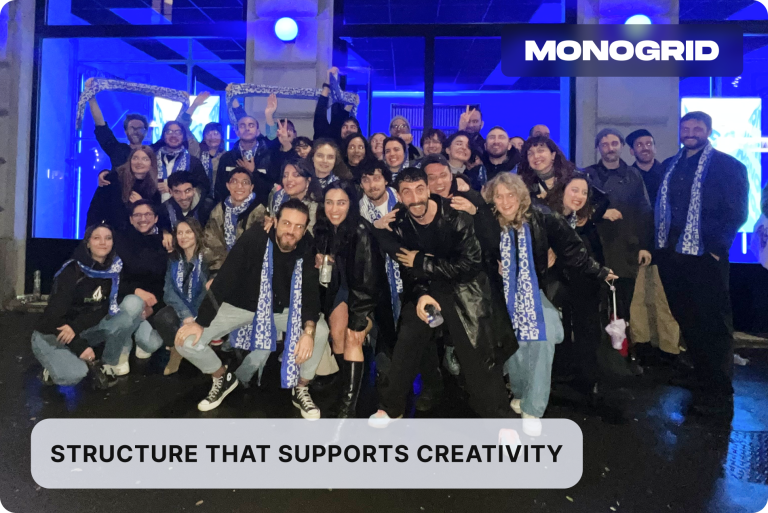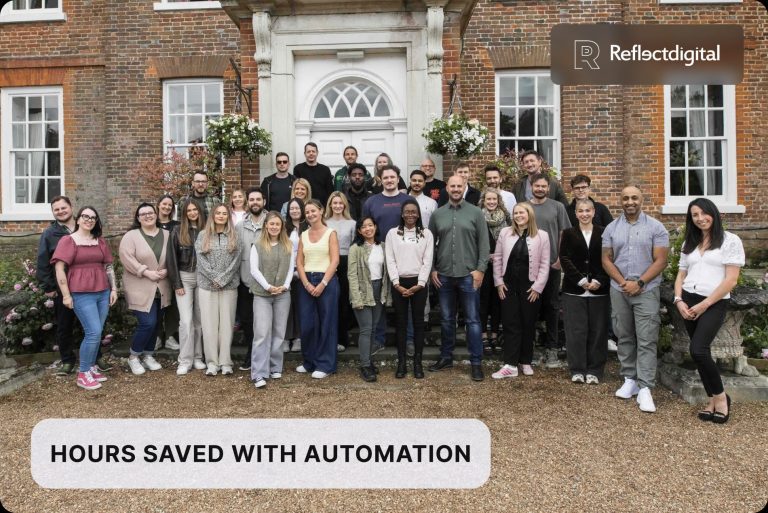Clear Launch Has More Predictability and Consistency With Productive

Before using Productive, software development agency Clear Launch struggled with optimizing their utilization rates and predicting future work. This made it hard to understand which projects weren’t profitable and how much time they were spending on internal work. Now, they run their entire agency in Productive: from sales to invoicing, and everything in between. We spoke with Orion Jensen, CEO of Clear Launch, to see how they optimized their internal processes and grew using Productive.
How old is Clear Launch, how many people do you employ?
We were founded in 2013. We kind of bootstrapped the business. It started off with me writing software for people from our network. I’ve got one partner—he’s an investor who was trying to help local companies get off the ground. The company was formed by getting these startups off the ground. Over time, we slowly grew with the market. Today we’ve got 15 individuals on staff. We’re broken down into 3 smaller software development teams. We do a mix of startup work and enterprise software development. We tend to focus on Microsoft technologies, which is a little more enterprisey.
Would you say that your clients are mostly startups and if yes, which industries do they cater to?
Some of our earlier clients were startups but we have grown as they have. One of our bigger clients is Tiff’s Treats, they have 59 locations in Texas, Georgia, Tennessee and North Carolina. They were the first company in the United States to focus on online warm cookie delivery. Another one of our clients is basically the TurboTax for truckers and has processed over 1 million Heavy Highway Vehicles. Sports Clips is a national chain with over 1,600 locations which caters to men and boys by providing hassle-free hairstyling in a sports-themed environment. Our focus and drive is building powerful, custom, operation-focused technology solutions for committed clients.
“That was probably the biggest added value of switching to Productive: connecting billing and project management.”
Achieve Your Agency’s True Potential
Switch from multiple tools and spreadsheets to one scalable agency management system.
We Help Your Agency Reach New Heights
Switch from multiple tools and spreadsheets to one scalable agency management system.
Do you remember what your operations and project management looked like before you started using Productive? What kind of overview did you have of what was happening in the company?
In the very beginning, we started with Harvest, which covered time tracking and invoicing. On the project management side, we bounced back and forth between Trello and AgileCentral (Rally was another name for it). We used a number of different things. As you know, time tracking and billing are disconnected from your work. So, being able to go down to a micro-level and do an estimate vs. an actual, we can say: “OK, well, I told you this thing was going to take me 100 hours, but it took me 200 hours. Let’s see where we went wrong.” We never had that data because our management systems were disconnected. That was probably the biggest added value of switching to Productive: connecting billing and project management.
So when you say those things were disconnected… What did that cause for you internally? What were the side effects?
One big side effect was just not having the data for our client to know their true project status. Setting good customer expectations is huge in our business. It was never possible to give someone a comprehensive project update that said: “We’re 50% through your budget and we’re 50% through with your project, so we’re on track.” Instead, we would know one or the other, but trying to marry the two was just so time-intensive that it wouldn’t get done. So, you’d get to the end of a project, and then there would be surprises in terms of the budget—which ultimately leads to unhappy clients.
“Having estimates at the detailed, task-level and the system automatically keeping track of how much time is remaining—now we have the tool that has the capability to do this.”
Did you ever break a budget?
Yeah, it’s happened. Your project ends up going over and you don’t realize it along the way because you don’t have these micro-level estimates. We had that with at least one client who wanted to go back and dive into the details of how we went over budget. We had timesheets, but there was no way to tell why something went over.
With software development, we have to build based on estimates, and there’s a lot of things that are or aren’t in your control. A project is made up of hundreds and thousands of tasks and to-dos. If you can explain things reasonably, clients are generally understanding. But if you don’t have the data, you lose that story over the course of months of work. If you lose track of the details, it’s hard for clients to feel OK about the bill they’re getting at the end of the day.
Do you easily get information out and communicate it with clients in Productive, or is it still a lot of work?
It’s much better. Having estimates at the detailed, task-level and the system automatically keeping track of how much time is remaining—now we have the tool that has the capability to do this. There’s still a bit of work to make sure that the data stays good. Our business is always challenging, but the tool is way better than what we had before, and now we have the data.
“We’ve always known how we were doing as a company on a monthly basis, but knowing on a per-project level, in real time—we never really had that visibility.”
Were you always aware of how much profit you were making? Were you surprised when you got more details?
I feel like it’s way better now. We do our financials at the end of the month. We’ve always known on a monthly basis how we’re doing as a company, but knowing on a per-project level, in real time—we never really had that visibility. You guys do a good job of providing that. If you look at it on a yearly basis, it does give us the ability to look, per client and per project, where we really stand. Being an agency, we have to keep everybody busy. The Scheduling component is more interesting and more valuable to us than the profitability side of the tool.
So, you want to keep people fully utilized, not too much, not too little, right?
Yeah, and it takes a lot of planning. You can’t just throw a person onto a project. Depending on their skills and what they do, the project has to be at the right stage for someone to jump in and contribute. So, if I throw a front-end developer into a project that doesn’t have requirements yet, he’s not going to be able to contribute well.
So, I have to know that this person has free time coming up in the next two weeks, and I need to have something for him to do. How do I get something that’s far enough along for this person, or within his wheelhouse, to keep him utilized?
That’s what you use Scheduling for, right?
For a business like ours, utilization is the only metric that a business like ours really cares about.
How were you tracking your utilization before? Was it lower or higher than now? Did you have enough data?
It wasn’t scientific, we didn’t really have a tool for it. It was more just managing it on the fly. Now we have visibility into it. This forecasting report that you guys have, we turned that into a weekly meeting. Our project management team looks at all their projects and balances all their resources and see if we have any holes, or if we’re fighting over the same resources. We’re able to trade and plan through it, which is not something that we did before.
That’s a really good internal process. Have you seen the benefits? Are project managers happier? Do you see improvements in utilization, is there less chaos?
There’s less chaos for sure. Before, I’d have to think of something for people to do without having any planning towards it. Often it would end up being just busy work and not things that were super valuable to our company. We have internal projects that we have people contribute to, as long as we have a week’s notice in advance, I can scope something out and find something we can really get value out of.
“Since the process has been baked into the tool and we clone it, the chances of people following the process and not missing critical details has been a huge win.”
Have you seen more progress with your internal projects since implementing this process? Are people bringing more value to those projects, are you commercializing them?
The one thing that we never had before that I really like is the ability to almost templatize our projects. We created a sample project that has all of our standard processes built into it. Whenever we start a new project, it’s something we can clone. That’s a huge advancement in terms of trying to have a consistent process across the company, and one that everybody follows. In the past, we used a giant document that people had read, looked at, or completely ignored. Since the process has been baked into the tool and we clone it, the chances of people following the process and not missing critical details has been a huge win.
“The fact that Productive is agency-focused means that the whole ecosystem fits together so that there are fewer tools we have to pull together in order to do what we need to do.”

Initially, you were looking for a tool that would help you drill down on estimates vs. projects. What made you decide to go for Productive?
Well, we were looking at a lot of different tools, but most of them weren’t agency-focused. The fact that Productive is agency-focused means that the whole ecosystem fits together so that there are fewer tools we have to pull together in order to do what we need to do. We have a more comprehensive picture and we’re not fighting the tool to make it work for what we do. You guys understand who we are and what we’re trying to accomplish. And that’s just been a huge win.
Do you remember what other tools you were considering at the time?
We looked at Jira a time or two. We’ve looked at Projectmanager.com—they have a lot of Gantt chart style planning. In Productive, the ability to tie invoicing and detailed estimates and project deliverables: that’s kind of been the secret sauce.
Did you expect to get all of that in the beginning, or were you just expecting estimates and actuals?
I think trying to tie the invoicing to the tasks was the biggest thing I was looking for. The reporting, the support—there have been a lot of amazing things that we didn’t expect.
After implementing Productive, you’ve been using it for more than a year, what has changed? Do you feel that you’re a more mature organization, are you spending less time in spreadsheets, are you making more money?
More predictability is probably the biggest win for us. Having all of our projects be more consistent and reliable. It’s tough having three different teams each having 3-6 projects of varying nature and complexity. Being able to look into the details of what they’re doing and how, and being able to understand it quickly.
From a leadership standpoint, I’m able to jump in and analyze these projects, and from a team member’s standpoint, I’m able to go and work on three different projects and have a consistent process and a consistent set of tools. Some of our projects are very agile, some waterfall, some short, some very, very long. I feel like consistency and predictability has been very hard to get in our world. Some clients have a release every six weeks for years, other clients have one-time, three-month projects. Being able to take all that variability and put it into a consistent process allows us to actually manage it with transparency.
Did you get some benefits from Productive that you didn’t really expect at first?
Scheduling has brought a ton of value. The ability to add our clients to a project and collaborate using boards. The simplicity of billing clients at the end of a month with accuracy and profitability in mind. Plus, the API access, I wasn’t really planning on the ability to build my own stuff but knowing I can offers so much extensibility. Productive has been beyond my expectations.
Did you create your own Agile dashboard?
It’s really just meant to be a status report. The idea is having the system generate an automatic status report that sends to us on a weekly basis. If we’ve done our job right in maintaining the data in the system, a good automatic summary for a client tells them:
How are they doing on their budget, task estimates?
What are the risks right now?
What did we finish last week, what are we doing next week?
They get a comprehensive snapshot of the project so that the client never gets a surprise. We don’t have to worry if any client hasn’t got a budget update in a few months. We’ve automated that so that our Project Managers don’t have to do that.

For you as the CEO, Orion, how did your job change with Productive? Did you have a big learning curve? Are you now spending less time on something, more on something else?
Before, I think I was trusting the project managers a lot to make the projects work and succeed however they could. Some project managers are capable of pulling it all together and having no issues, and others come in to ask for help when things are on fire—when it’s too late to fix anything. A lot of my focus has been trying to get our teams in a consistent set of processes and tools so that there’s more visibility and predictability. So, my role has been process management and training, and using Productive to organize the way we do work as a result.
“Because we’ve always strived to be a high-quality vendor, I feel like having an all-in-one tool helps a lot.”
Did you spend a lot of time doing reports before, or you just didn’t have the data?
We didn’t have the data before, so we would hope things would work out ok. Ultimately, this will raise the quality of what we do because we can go back and take lessons learned. If we end up going over budget on particular tasks, we can go back and bake that into our process, and then it’s less likely for things to fall through the cracks. Because we’ve always strived to be a high-quality vendor, I feel like having an all-in-one tool helps a lot.
Are you sleeping more soundly because you have the data now?
The truth is, we can quickly get a pulse for where we are, at any given time. One way to get a pulse on the business is to get the monthly financials, but for the monthly financials to come in, it takes the accounting department about 15 days after the month ends before we get a picture of how we really did that month. Whereas, with the financial tools that Productive offers, you can check it on a daily basis. We have clear visibility at any given time.
Are there any growth numbers you can share, anything where you see significant improvement since using Productive?
From a revenue standpoint, our growth has been slower than expected due to the impacts of price pressure from offshore development companies, the delayed customer spending impacts from Covid-19 and the ever increasing volume of off the shelf software that constantly fills the market. But as these things happen you have to focus on containing expenses, improving efficiency, and ensuring customer value. Productive increases our efficiency and our productivity so we can focus on maximizing client value. I think just from my involvement, I’ve been able to step back a lot more and I don’t have to be part of every project— I can just trust the process. I don’t have to go talk to every project manager or ask a dozen questions. From my time and level of involvement, it’s improved a lot.
Do you think that Productive’s roadmap can follow the direction you’re taking in the future?
I am often excited by Productive’s roadmap. I feel like we are contributors in a way since I am often chatting with the Productive team by offering suggestions and the way we think about using Productive and I feel noticed and heard and features are constantly forthcoming that add value to what we are doing for our clients. You don’t get that from a lot of companies: a constantly improving, feature-rich roadmap with high visibility and eager anticipation.
Can you tell us about any project that you’re proud of?
We have so many cool ones, it’s tough to choose one! Tiff’s Treats are our cookie delivery folks. We did an entire platform for them: we’ve been working on mobile apps, back-end APIs, front-end, e-commerce websites. They’re the most technologically advanced cookie company you can imagine. Last year, we worked on an augmented reality solution with them, where you could scan your box of cookies and somebody can leave a custom video message for them. After you record that custom video message, it gets saved into your order and somebody scans their box of cookies with their mobile phone, and a virtual cookie walks on top of your box and plays your video. It’s taking a business that’s not a tech business but leveraging the most cutting edge technology that’s available, for such a cool purpose.
What’s your favorite feature in Productive?
Being a software guy, I’d say the APIs.
Achieve Your Agency’s True Potential
Switch from multiple tools and spreadsheets to one scalable agency management system.


